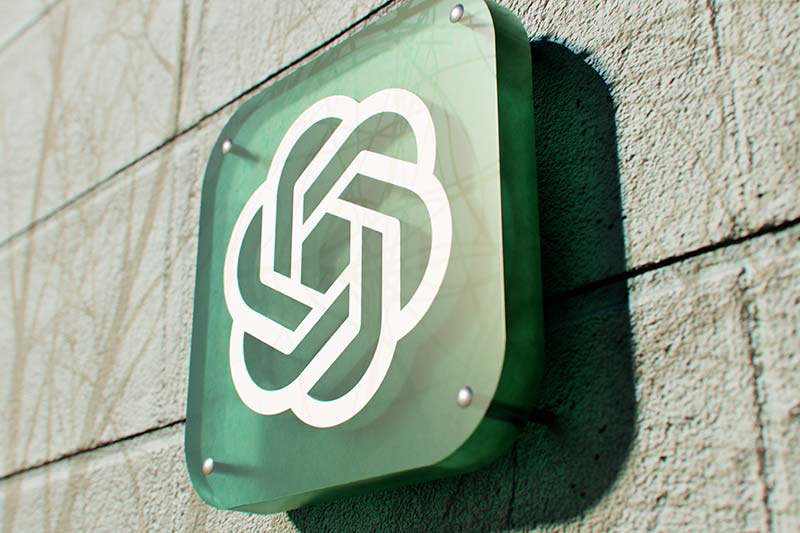Buy This, Not That: Are These Utilities BUYs Thanks to AI?
Shah Gilani|May 15, 2024

Do you know what the best-performing sector of 2024 is?
Boring. Old. Utilities.
Not so boring anymore!
Utility companies have been swept up into the AI narrative… as “pick and shovel” plays powering the AI revolution…
Not to mention making the “everything electric” narrative possible.
So today’s we’re looking at seven… count ’em, SEVEN… utility stocks.
Which ones are BUYs… and which ones are NOT?
It’s all in the latest episode of Buy This, Not That… your exclusive guide to the stocks that are worthy of your money – NOW.
Click on the thumbnail below to watch.
Note: While utility companies make for interesting plays on AI… my absolute favorite way to play the AI boom is with a tiny company that’s flying completely under the radar… with nearly a billion dollars in government contracts! Get all the details here… including my stunning price projection.
TRANSCRIPT
Hey, everybody, Shah Gilani here with your weekly BTNT as in, But This, Not That. Today we’re going to talk about utility companies. Why? Because they’ve been hot… the hottest, best performing sector in the S&P 500.
Wow, so why? Well, utilities are usually thought of as boring, buy them for their dividend, their steadiness and their lack of volatility. Not anymore. Why are they hot?
It’s all about AI. It’s about data centers. It’s about electrification of everything, including obviously EVs and the world as we know it.
But here in the U.S., it’s really about electricity production, it’s about energy production. So utility companies’ stocks have been doing very well.
So let’s get into it.
Now, I’m going to do a little something different today. I’m going to share my screen. I’m going to look at these as I go through them, graphically, because you’re going to want to look at them in terms of performance to understand the pros and cons or why they may be a BUY or NOT.
So let me go to my screen share, and I’m going to start with, first of all, Constellation Energy Group.
Now, here’s a one-year chart of Constellation Energy Group. And what you’ll notice, holy mackerel, a lot of nothing. And then boom.
So Constellation Energy Group, CEG.
And you see here I’ve got my 50-day moving average. 50’s right here, 200’s here. I’ve got a 7 and a 21. So that’s what these lines are here as far as moving averages.
Now, a heck of a move for Constellation Energy. This is one of the largest nuclear plant, power plant owners in the U.S. This to me is like a growth shock, if you will.
Yes, it’s about nuclear. And they actually delivered the first ground-up built nuclear facility in 30 years last year. So, I like Constellation Energy for the nuclear aspect of it, because I think we’re going to see more of that. So the stock’s had a tremendous, tremendous run.
You look at this stock on a five-year basis, you’d be like, oh, well, you know, or let’s go back to three.
It’s like, really? What’s the point? Then all of a sudden, bang, breaks out. So this year, stellar performance.
There’s nothing to speak of as far as the dividend. The dividend yield is like, well, don’t even, I won’t even bother. It’s less than a quarter of a percent, some nonsense.
This is $67 billion market cap company, with $23 billion-plus in revenue and a 10.25% profit margin. The quarterly revenue growth is not great at all. In fact, it’s not good. But the quarterly earnings growth rate has been triple digits, absolutely fabulous.
And I think that’s why the stock has gotten such attention, and hence this liftoff into space. So yeah, it’s a BUY. Yeah, it’s a buy, because of the narrative, the AI narrative, the data center use, the data of just the digitization of everything, the AI of everything, and the electricity demands for all of that. So yes, great story stock, and it’s a utility that has performed exceptionally well.
So it’s a BUY. It’s at $216 and change, as you can see up here. But here’s what I’ll say about that. I definitely would put a stop in there.
This is a heck of a move for a utility. I mean, this is like crazy stock. I want to say meme stock, but not quite. But so be careful.
I like CEG as a buy. I would probably put a 20% stop on it. If it falters, if it comes back here, say to $172, I’m not so sure I want to add to that. I’m not so sure that maybe something’s wrong, but for those of you who have faith in it longer term, maybe you would buy down there.
But for those of you who want to cut your losses and are nervous Nellies, then maybe get out at $172. By the way, that’d be our 20% loss from here. If the stock rises, if you do buy it here and the stock rises, then you raise, I would say if it gets to $230, absolutely raise your stop to $196. And if it comes back down, you’re pretty much, you know, well you’ll have a little loss, but it’s not so bad.
So Constellation Energy, it’s a BUY with a caveat.

Next up…
Oh by the way, Constellation Energy was spun off in, I think, 2022 from Exelon. So let’s take a look at Exelon next. Now, EXC, Exelon, long story short here, I’m not going to bore you with this one, is, duh, what’s the point? So EXC is trading at $38 and change here, just ugly.
There’s a one-year chart of it. So, for me, if I’m looking at a stock that I want to see perform and it hasn’t performed, while other utilities have, I’m not going to be interested in it, and I don’t think you should. So it’s not a buy. And look at this, there’s a whole lot of nothing here.
So as far as Exelon goes, yes, it pays just shy of 4% dividend yield. So, that’s enticing, but it’s not enticing enough. They have huge debt, limited cash, and they don’t compare well to their peers.
So, NOT as far as Exelon goes.

Next is one that a lot of folks talk about these days. It’s NextEra Energy, symbol, NEE. Now, NextEra is all about the next era. So guess what?
It’s not only a cool name, it’s a kind of narrative name, and it kind of fits the ESG narrative, because it’s the next era about renewables and all that good stuff. But take a look at the five-year chart. Unimpressive… you had this roll over here, and then guess what? Ooh, on a one-year basis, NextEra catches fire lately.
But if you look at it on a three-year basis, it’s still not attractive. It hasn’t recovered. On a five-year basis, it has still gone kind of nowhere. So, NextEra is pretty exciting in terms of the narrative associated with it.
It’s about generating renewable energy. Yes, that’s really cool, people. The company has $27 billion in revenue and a 27% profit margin. Super nice. Dividend yield, 2.76%. You know, if you want to buy this story here, you could, but I would put a stop in at $65, which is right around the 50-day moving average.
So that would get me out. Yeah, I would say 50-day moving average is $63. So for me to get down there, $63, $65, it’s not working anymore. So, again, this is one of those ones that have had a nice ride, but the overall picture isn’t as good looking as, say, Constellation.
So as far as NextEra, it’s a BUY with a caveat of another, again, a pretty tight stop.

Next up is Southern, one of the big boys in the field, and there’s, of course, a lot of big utilities in the U.S. Southern’s symbol is SO. If you want to see a chart that has another fancy move higher, there you go.
Look at this.
And this really starts in April. It’s like, wow, what the heck? Boom. So, Southern, symbol SO, $25 billion revenue, 16% profit margin.
The earnings were really good. First quarter EPS up 14%, year over year. Their data center sales up 12% year over year. So that’s what I’m talking about.
We’re seeing growth in those areas, for sure. It has a lot of sideways action, if you look at this chart. And it’s broken down for sure. The dividend at 3.66% is not bad, but, really, people? Not really doing much for me. And here’s the five-year. So, if you look at the five-year, it looks really good on the one-year.
It’s like, wow, okay, I wouldn’t bother buying a stock that’s going sideways. And then you’re going to chase it up here. If you look at it on a five-year basis, and okay, on a 10-year basis, like, yeah, it’s gradual, but has it gradually gone higher? But would you want to really chase this now?
And here’s the recent high back up there in 2022, at $80.57 on intraday basis. We’re almost there. I wouldn’t chase this now.
If you have to, you want to, for the 3.66% dividend yield – it’s not worth chasing, in my opinion – but if you want to, and you buy it in here, use a really tight stop, people, maybe a 10% stop. I’m saying this as far as buying some of these, because a lot of you are now are looking at utilities or maybe start thinking about utilities because they’re part of the AI narrative.
The AI narrative has led into the utilities as the picks and shovels of the AI narrative story. So that has drawn a lot of attention to the utility space, and you’re going to hear a lot more about it and rightfully so.

Next up is NRG Energy. Simple, NRG. So NRG Energy, first of all, we’re going to take a look at this on a one-year basis. And there you go.
You got the same story, people, you’ve got this same narrative of, holy mackerel. Oh look, there’s a whole lot of nothing. Kind of building, building, building, but then, bang, you know, guess what? Guess what that is?
You know, that’s February of this year, and it just absolutely takes off. So as far as NRG, the stock has been boring, in fact, dead. If you look at it on the five-year, are you kidding? Are you serious?
Who would want to invest in that stock? If you had been invested, you would’ve wasted a lot of capital you could have applied elsewhere. It’s had a run. It’s had a great run here at $82.
But just note to self, the average five years been around $37. So it’s just gone sideways until recently. And now if you miss this gigantic move, then do you chase it? Do you chase the stock, a utility stock that’s done this?
The answer is yeah, if you think it’s going to go higher, but use a very, very tight stop. This is a $17 billion market cap utility with $28 billion in revenue and a profit margin of 5.76%. It’s got the usual debt load, but their leverage free cash flow is positive. And that’s rare.
The thing I do like about it most, and the thing that has propelled it is its return on equity has been stellar. Based on the last quarter, their return on equity is 50%. Now, return on equity, people, net profit from continuing operations divided by shareholder equity. So return on equity 50% is just insane for utility.
And that’s why the stock has moved up. People started noticing the ROE on this thing, and like, holy mackerel, this thing is fabulous. The industry is probably less than 9% ROI, I say 9%, 10% on a good day, but 50% ROE for NRG is the reason that the stock has gone higher. So, here, again, if you want to chase it, it looks awfully lofty to me, and you’re looking at a one-year basis, it’s like, whoo-eey, but if you want to chase it and you’re not against chasing, look how overbought this stock was, and it kept going higher.
So that’s a positive overbought, overbought, overbought, and kept going higher, higher, higher. Can’t fault that, people. That’s pretty good. So as far as NRG goes, I say yeah, if you want to chase it, buy it.
Let’s see, stop wise here? Well, it’s not, the dividend’s not even worth talking about. I would put a 15%, 16% stop on it, because it could break back down. And again, I hate chasing stuff up like this.
In one respect, you’re chasing, you know, a high flyer. And on the other respect, I do like buying stocks that are going up. So I’m kind of caught in a dilemma here, because utility story makes sense. So, yeah, if you want to chase it up here, use a 15%, 16% stop and get out and revisit it if it collapses, oh, because if the market dips, there’s going to be a lot of profit taking in these utilities, people.
Trust me, if there’s going to be a market correction, the utilities are coming down. They have some protection because they’re utilities, we can’t do without them, but still, because of something like this. And now we’re looking at NRG. There are a lot of profits for people who’ve held on this forever and all of a sudden, you know, they’ve doubled their money.
I was like, wait a second, I held on for what seems like forever for nothing. And, oh, all of a sudden you’ve just doubled your investment, you’re going to take profits. Everybody who’s gotten a double on this in the last year to two years is going to probably take profits.
So, these things could turn right back around, but it’s a BUY with a tight stop, again. And if it keeps going up, raise your stop.

Next up is Pacific Gas & Electric, PG&E. Symbol here is PCG. Now, PCG has been in the news due to the California wildfires.
They’re being sued right, left, and center. The lawsuits are not so damaging, because this is a giant utility. And look at this, here we go, just, there’s your answer.
PG&E, would you buy it? NOT. A lot of nothing. It hasn’t had those kind of stellar moves and it may be affected by, I would say, the narrative that they’re at risk for lawsuits for the various California fires that supposedly they caused. But if you look at the sum total of the lawsuits, they are de minimus in total for what they’re being sued for, relative to the amount of money that the company generates.
That’s not the reason I wouldn’t buy. The reason I say it’s not a buy is I don’t know where it’s going to go. I don’t know where it’s going to go.
They’re trying to spin off one of their power generation units to KKR. That was squashed. So, they’re trying to raise money, and they’re just having a hard time doing it. So, to me it’s a NOT.
It has a $46 billion cap and a 10% profit margin.
But I’m not interested. Why? Why would you, why? So, there you go. NOT

Last but not least, Dominion. So Dominion Energy. Another big boy with a $44 billion market cap, $14 billion in revenue and 12% profit margins.
Here’s the one-year chart. And as much as Dominion has the usual debt load and everything else, you would look at it and say, boring, but look, it’s risen above its moving averages, the 50s crossed above the 200, maybe this is worth a buy.
Well, you might also look at the dividend yield, and say look, 5%-plus, just over a 5% dividend yield. That’s the only decent one of all the ones I’ve shown you today.
But be careful, because Dominion is probably going to have to borrow to maintain that dividend on account of the fact that the net income available to common shareholders, which is the money out of which they pay a dividend, is $1.94 billion over the trailing 12 months.
The cost of their dividend, people, is $2.24 billion.
So, that means the payout ratio, how much out of net income available to common shareholders they’re using to pay the dividend, is something like 115%, 116%. So, that money has to be coming from somewhere else. They’re going to have to borrow. So that means they could cut the dividend.
I wouldn’t want to be holding this if they cut the dividend. When utilities cut the dividend, people sell. So Dominion, I’m going to have to say, even though it looks like it’s where it’d be worth a little bit of a chase, I would hesitate, because of the dividend possibly getting cut. But if you’re tempted to try and catch it, just use a very, very tight stop.

That’s it for this week. Thanks for being with me. I hope the charts helped, and I’ll catch you guys next week. Everybody have a great week. Cheers.

Shah Gilani
Shah Gilani is the Chief Investment Strategist of Manward Press. Shah is a sought-after market commentator… a former hedge fund manager… and a veteran of the Chicago Board of Options Exchange. He ran the futures and options division at the largest retail bank in Britain… and called the implosion of U.S. financial markets (AND the mega bull run that followed). Now at the helm of Manward, Shah is focused tightly on one goal: To do his part to make subscribers wealthier, happier and more free.



